Weather Update; iPhone Moon, Aquila Stars
Posted: 23 October 2015
Wednesday, 14 October 2015, dawned with clear skies but clouds began appearing mid-morning from an approaching storm system. Some sprinkles arrived late Thursday afternoon. Friday night received 0.11" rain. Saturday got 0.28" rain. Sunday had 0.01" rain. No rain on Monday but received 0.3" late on Tuesday. Wednesday morning before sunrise a thunderstorm came through; one of my webcams captured this:
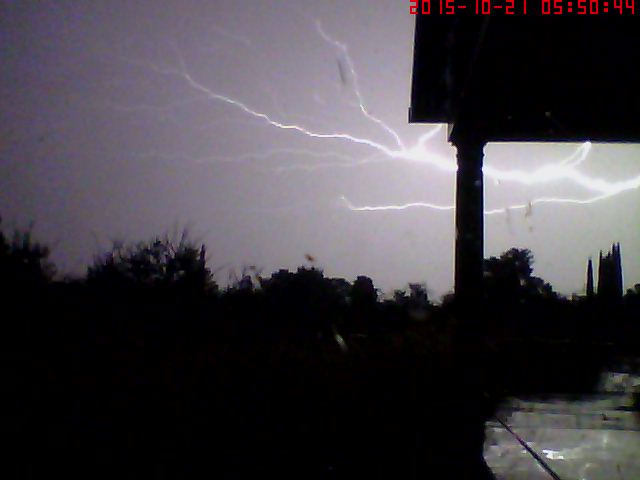
Had another 0.34" of rain on Wednesday. Thursday, 22 October, dawned clear with a forecast for a clear night (finally). Cumulus clouds began appearing mid-morning although the forecast still called for clear skies. By mid-day the sky was nearly overcast. As sunset approached on Thursday the sky began clearing up.
|
Open: Thursday, 22 October 2015, 1808 MST Temperature: 68°F |
Session: 868 Conditions: Mostly clear |
After opening the observatory I synced the observatory clock to WWV.
1817 MST: viewed Saturn and its moon Titan, low in the southwest, 83X.
Then viewed the Moon, 83X. Switched to 222X and did a lunar tour. There were many nice views this night, especially at the poles. 1827 MST: began setting up for iPhone imaging of the Moon. Mounted the iPhone 5s afocally, 77X, using my new Orion SteadyPix adapter (review still in work), and took this image:
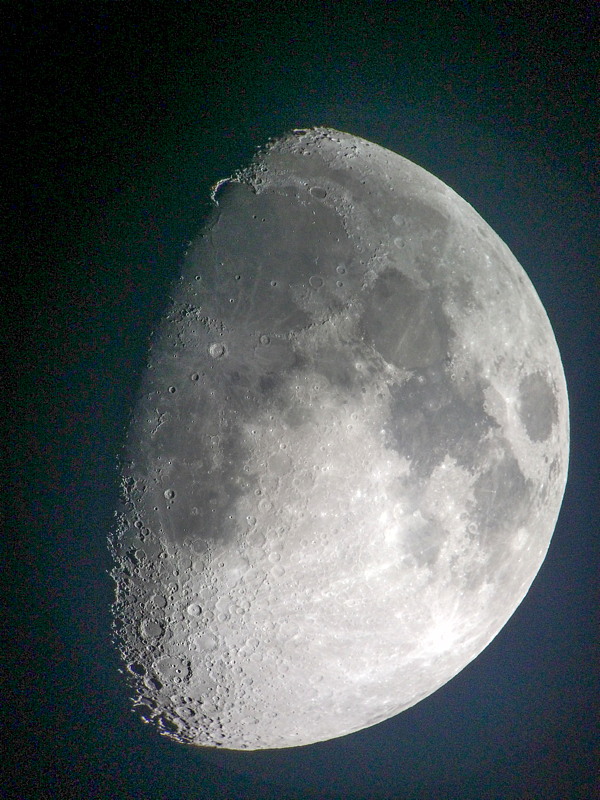
This is what a live view of the Moon using the Camera app looked like on my Apple Watch:

Added the Televue 2X PowerMate for imaging the Moon at 154X:
Northern region (full-frame):
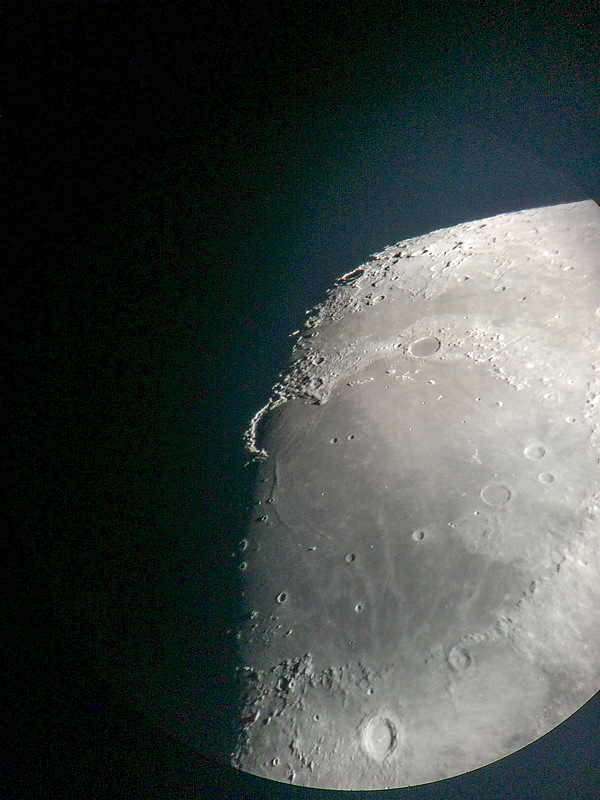
Crater Copernicus (cropped from full-frame image):
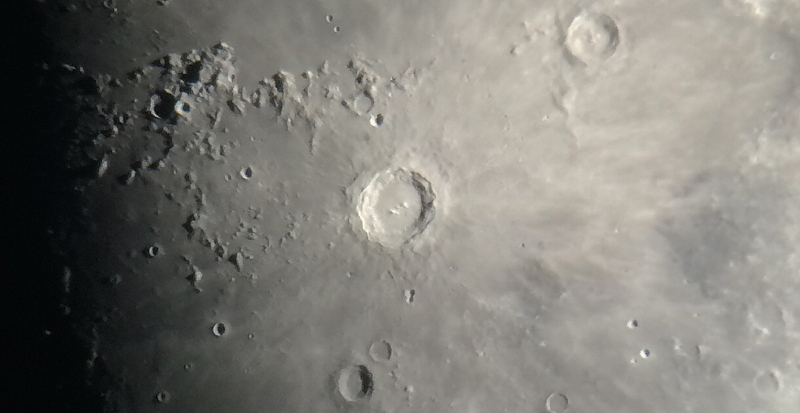
Southern region (slightly cropped from full-frame image):
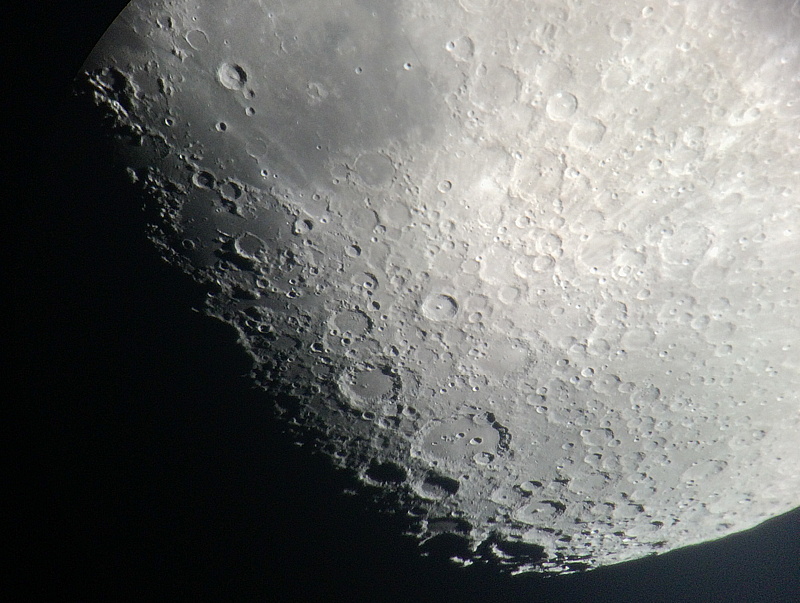
Using nearly full digital zoom in the iOS Camera app, zoomed in on the Crater Clavius (full-frame):
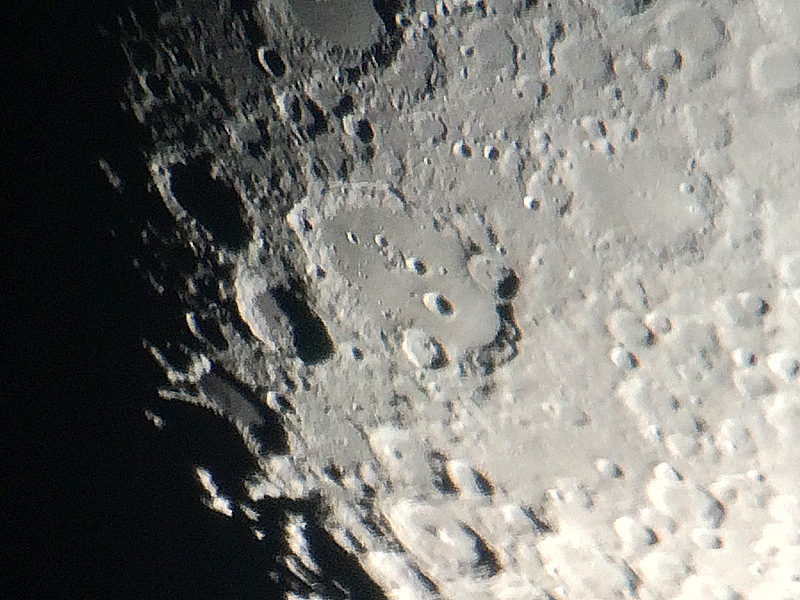
This is what a live view of Crater Clavius using the Camera app looked like on the Apple Watch:
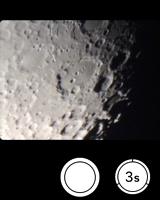
1854 MST: began some tests of NightCap Pro. This is a full-frame, unedited, ISO 8000, 1/2sec, exposure of the star Altair in Aquila, afocal 77X. Even with the bright Moon nearby, several stars in the constellation of Aquila were captured.
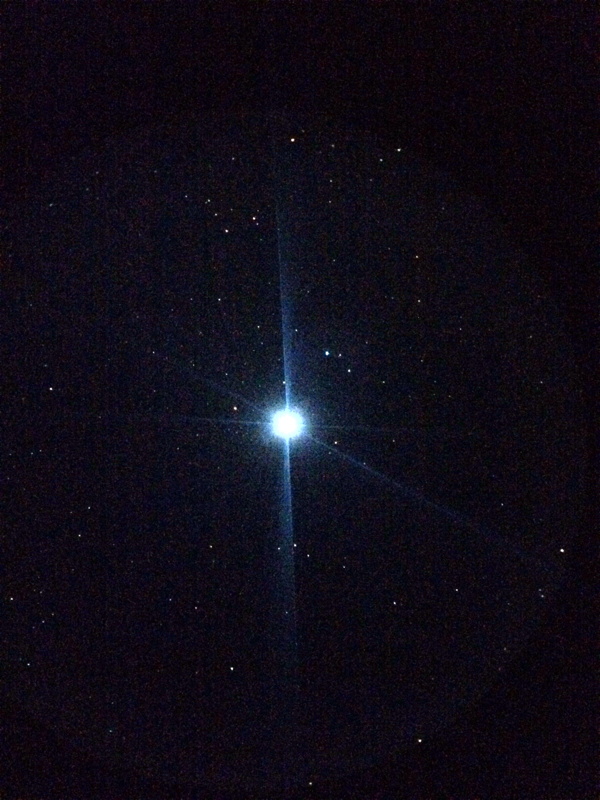
1915 MST: Ended NightCap Pro tests. Slewed to Neptune and viewed it at 83X and 222X. I had planned to image it this night but the bright Moon was too close to it. Decided to defer imaging Neptune and Uranus to a future date when the Moon would not be a factor.
1921 MST: returned to the Moon for some more lunar touring, 222X.
|
Close: Thursday, 22 October 2015, 1941 MST Temperature: 57°F |
Session Length: 1h 33m Conditions: Clear |
On Saturday, 17 October 2015, I conducted a workshop on "Beginner Digital Astrophotography" at Oracle State Park.
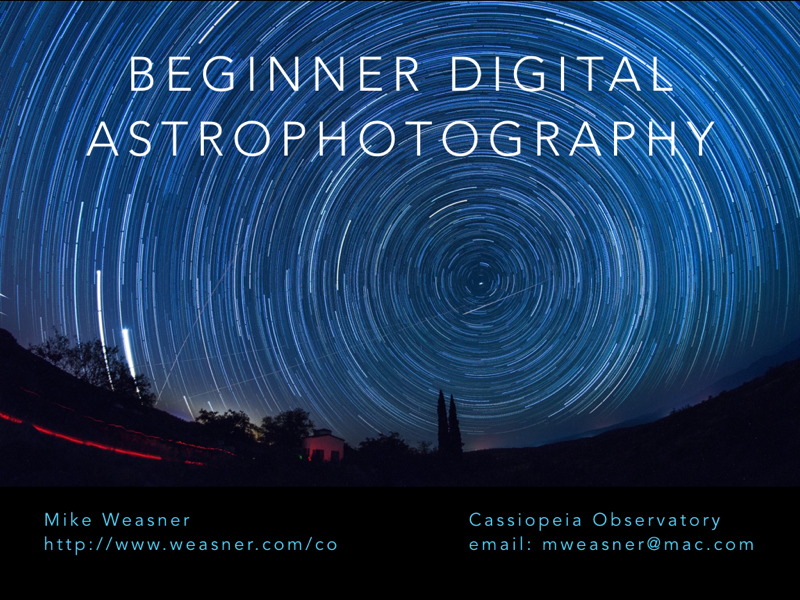
This was the setup in the Kannally Ranch House living room well before the start of the workshop:
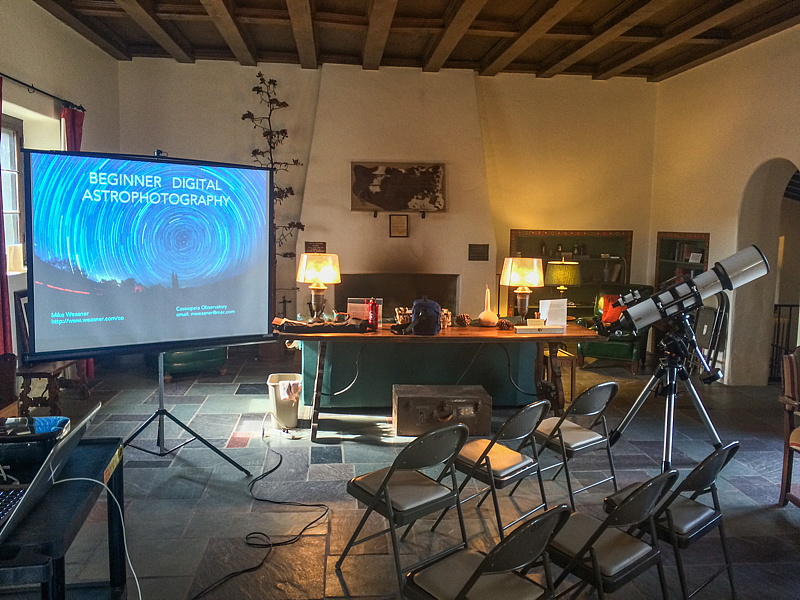
Attendees learned how to do basic astrophotography of the night sky, with and without a telescope, using their DSLR, point-n-shop camera, and smartphone. There was to have been a 'play session' after sunset using the Moon and planets for night sky photography using one of the Park's telescopes, but clouds and storms in the area prevented that.
And now available in the Oracle State Park gift shop is a postcard with one of my "Star Trails over Kannally Ranch House" photos:
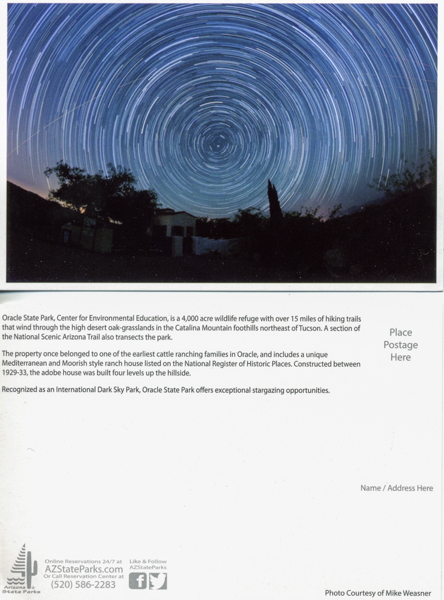
It is humbling that Arizona State Parks selected one of my night sky photos to showcase Oracle State Park and its "International Dark Sky Park" status.
Comments are welcome using Email. If you are on Twitter you can use the button below to tweet this report to your followers. Thanks.
Cassiopeia Observatory Home Page
Copyright ©2015 Michael L. Weasner / mweasner@me.com
URL = http://www.weasner.com/co/Reports/2015/10/23/index.html
